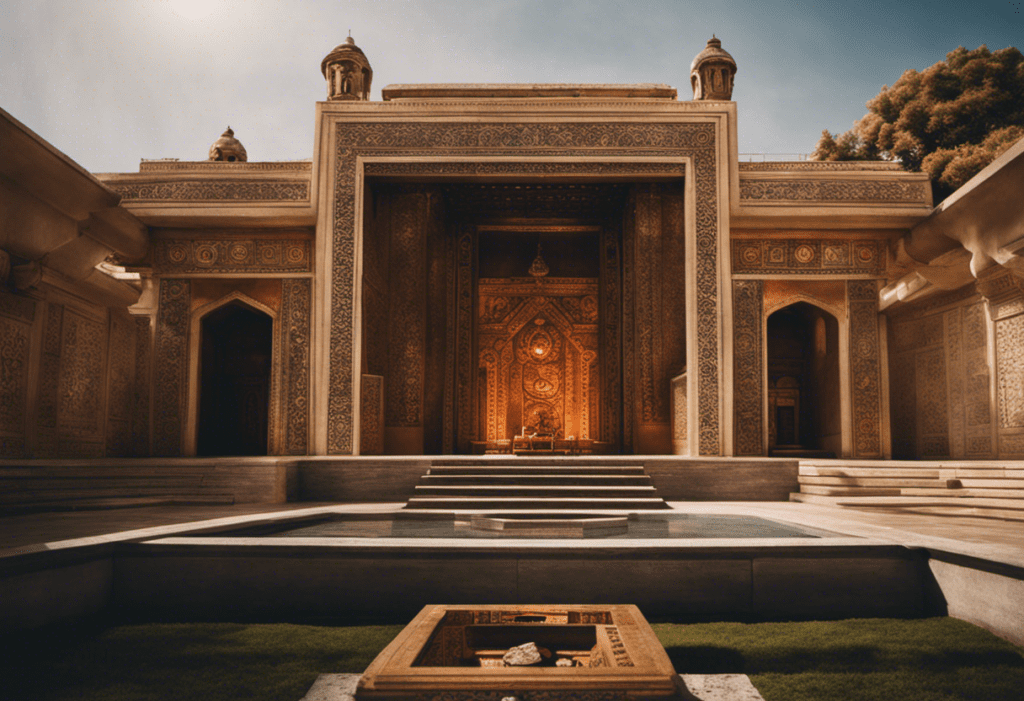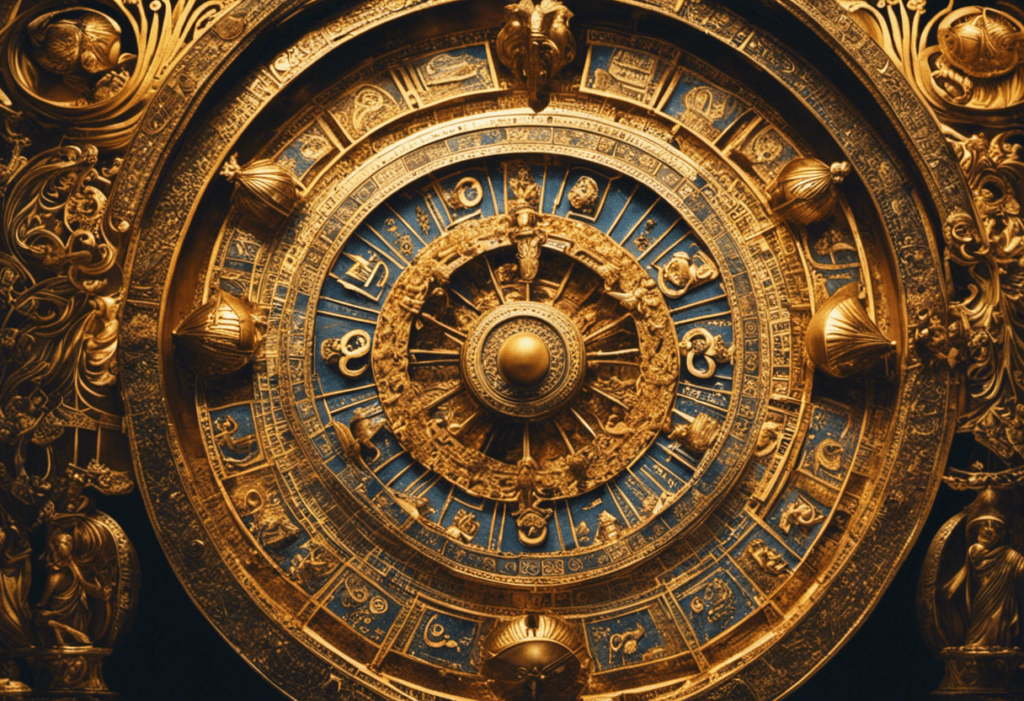Step into the ancient world of the Zoroastrians, where time was meticulously measured and celebrated.
In this article, we delve into the historical origins of the Zoroastrian calendar, exploring the profound influence of the Ancient Persian Civilization and the role of Zoroastrianism in shaping this timekeeping system.
From significant events to cultural influences, we trace the evolution of this calendar over time, uncovering its symbolism and significance in modern times.
Join us on this captivating journey through the annals of time.
Key Takeaways
- Ancient Persian civilization heavily influenced the foundation of the Zoroastrian calendar.
- Zoroastrianism played a significant role in shaping the calendar system by incorporating religious observances and festivals.
- The calendar was developed by Zarathustra in the 6th century BCE and is based on ancient Persian cultural traditions and astronomical observations.
- The evolution of the Zoroastrian calendar over time involved the integration of lunar and solar observations, as well as advancements in astronomical knowledge.
The Ancient Persian Civilization and Its Influence on the Zoroastrian Calendar
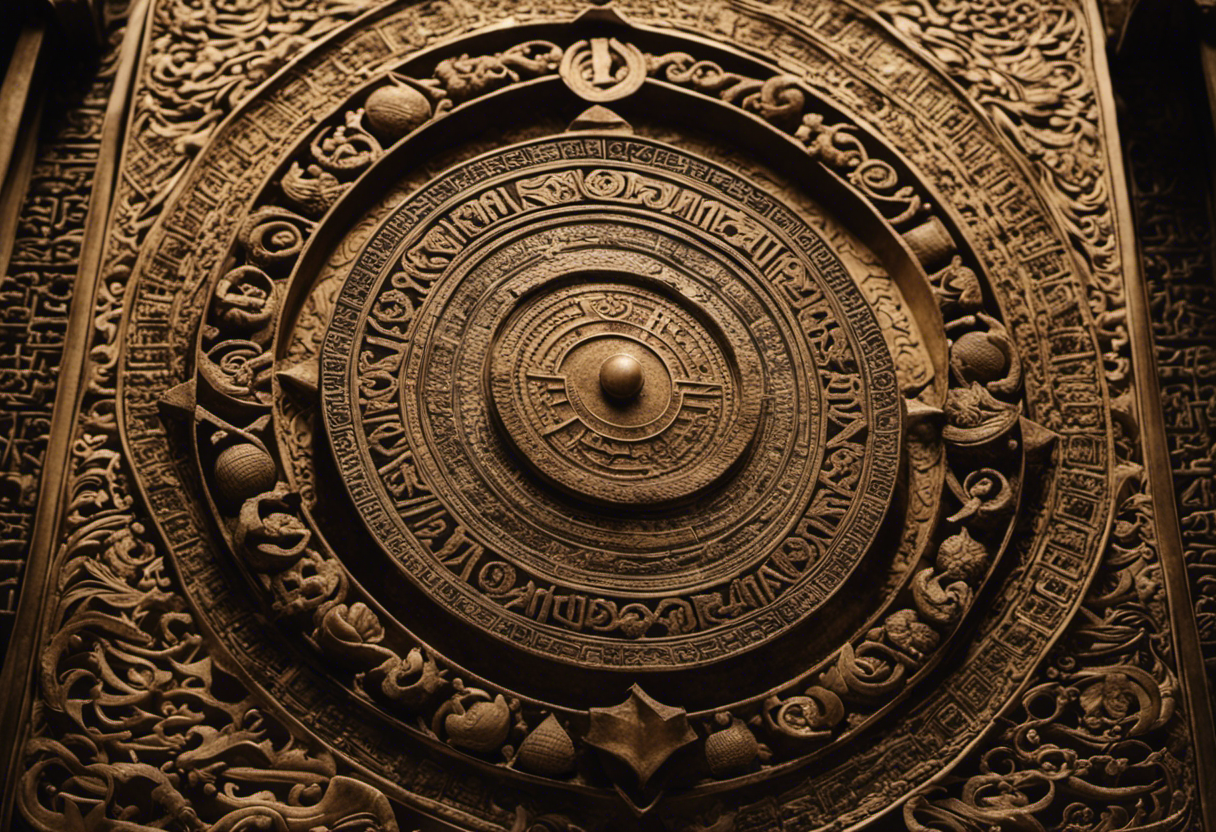

Examining the intricate details of the Zoroastrian calendar reveals the profound influence exerted by the ancient Persian civilization, shaping its foundation and guiding its evolution throughout history.
The ancient Persian civilization, with its rich religious traditions, played a crucial role in the development of the Zoroastrian calendar. Zoroastrianism, the ancient Persian religion founded by prophet Zoroaster, emphasized the importance of maintaining harmony with nature and the universe. This belief system heavily influenced the calendar, which was designed to align human activities with the cycles of the natural world.
The Zoroastrian calendar consists of twelve months, each named after a specific aspect of nature. This reflects the ancient Persian belief in the interconnection between the natural world and human existence. The calendar also incorporates important religious observances and festivals, such as the celebration of the spring equinox, known as Nowruz, which marks the beginning of the new year. These traditions highlight the close relationship between ancient Persian religion and the development of the calendar.
Furthermore, the Zoroastrian calendar provided a framework for organizing and regulating religious and social activities in ancient Persian society. It allowed for the planning and coordination of religious ceremonies, agricultural activities, and other important events. This systematic approach to timekeeping demonstrates the advanced nature of the ancient Persian civilization and its influence on the development of the Zoroastrian calendar.
The Role of Zoroastrianism in Shaping the Calendar System
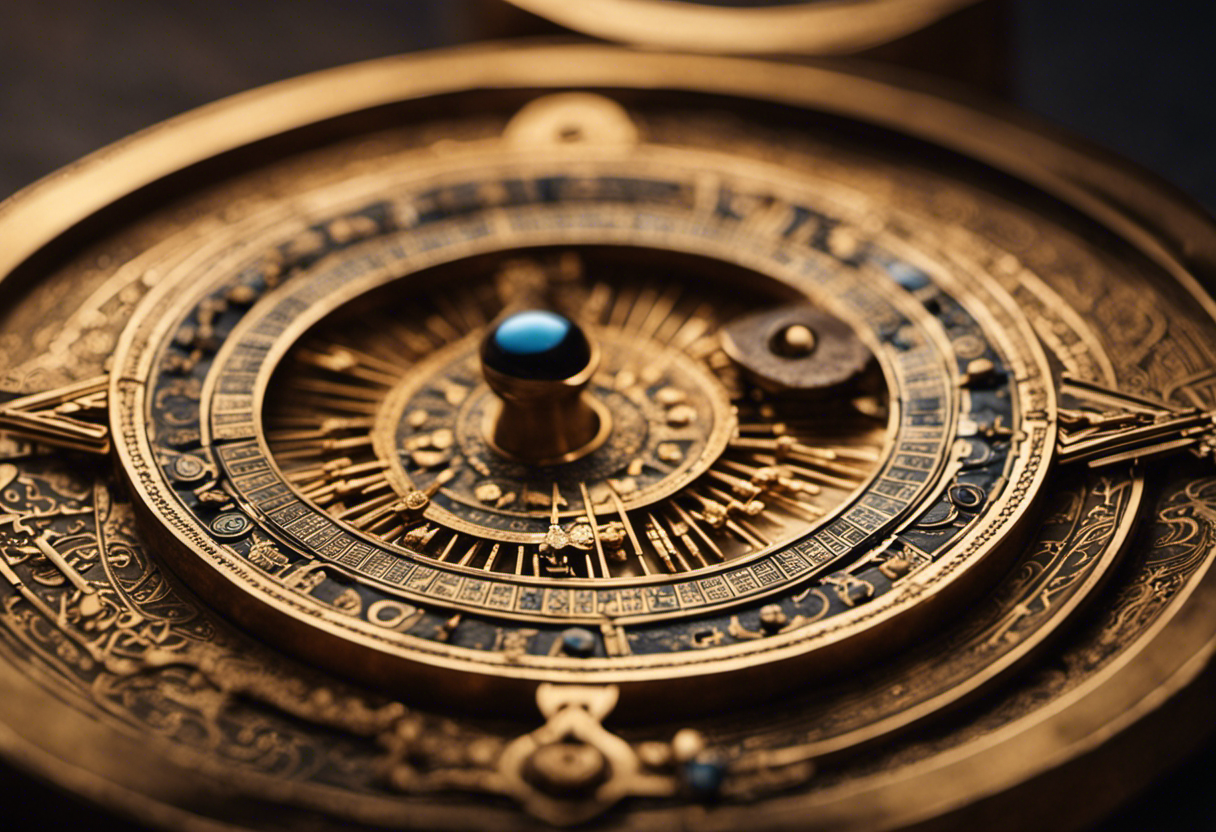

The influence of Zoroastrianism on the calendar system is evident in the incorporation of religious festivals and the systematic organization of time. Zoroastrianism’s impact on religious practices is seen in the way the calendar was structured to accommodate important festivals and rituals.
The Zoroastrian calendar consists of twelve months, each corresponding to a specific festival or ritual. These festivals are based on the Zoroastrian religious beliefs and serve as important occasions for worship and celebration.
The calendar also includes specific days for observing important rituals, such as the Yasna ceremony, which is performed to honor the deities and seek their blessings. These rituals are integral to the Zoroastrian faith and are observed with great reverence and devotion.
The systematic organization of time in the Zoroastrian calendar is evident in the inclusion of intercalary days called ‘Gatha’ days. These extra days are added to align the calendar with the solar year and ensure the accurate timing of religious events and festivals.
Overall, Zoroastrianism has had a profound impact on the calendar system, shaping the way religious festivals and rituals are observed and providing a structured framework for the religious practices of its followers.
Significant Events and Cultural Influences in the Development of the Zoroastrian Calendar
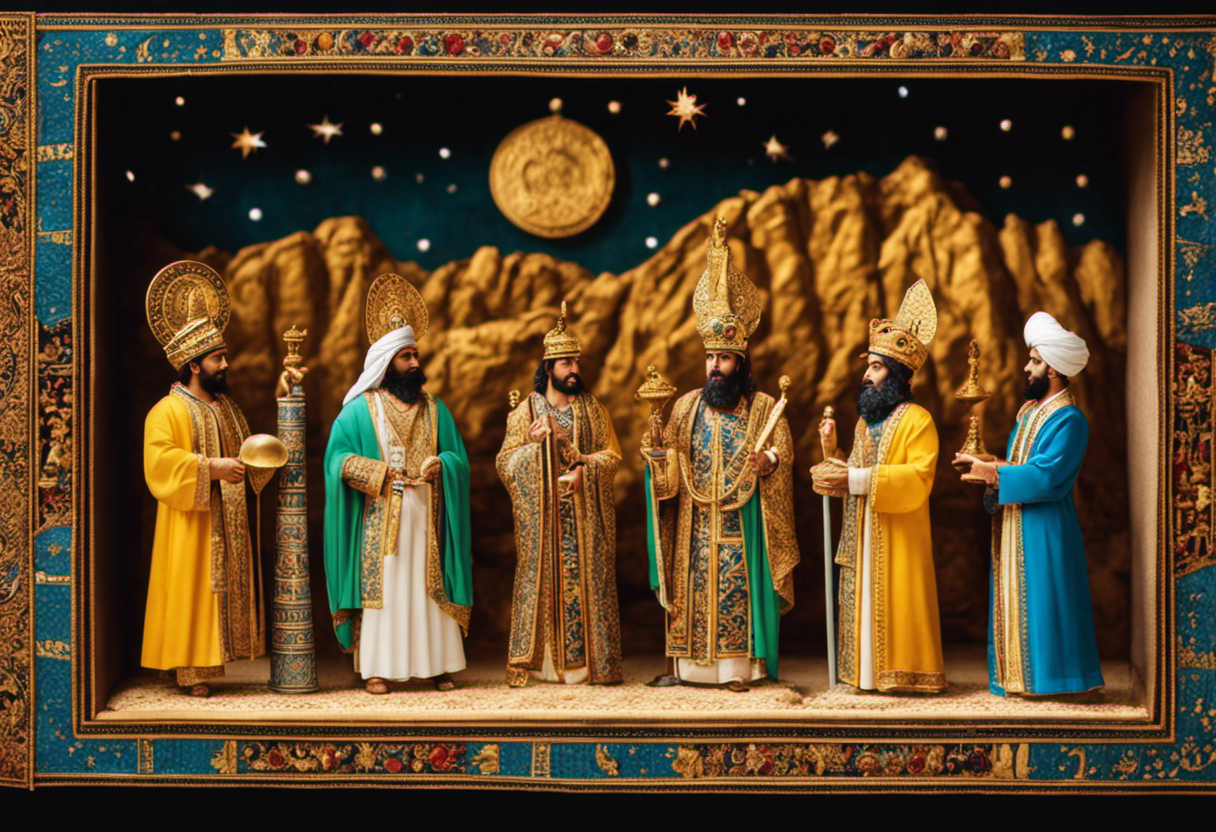

A key aspect of the development of the Zoroastrian calendar is the incorporation of significant historical events and cultural influences that shaped its structure and religious significance.
The Zoroastrian calendar, also known as the Fasli calendar, is based on the ancient Persian cultural traditions and astronomical observations. It is believed to have been developed by Zarathustra, the founder of Zoroastrianism, around the 6th century BCE.
The calendar consists of 12 months, each with 30 days, and an additional 5 or 6 intercalary days to account for the difference between the solar and lunar calendars. The months are named after various natural elements, such as fire, water, and earth, reflecting the close connection between Zoroastrianism and nature.
The development of the Zoroastrian calendar was influenced by the cultural traditions of the ancient Persians, who were known for their advanced knowledge of astronomy. The calendar was designed to align with astronomical observations, such as the equinoxes and solstices, to mark important religious festivals and events.
Overall, the incorporation of significant historical events and cultural influences in the development of the Zoroastrian calendar highlights its deep connection with the religious beliefs and practices of the ancient Persians.
The Evolution of the Zoroastrian Calendar Over Time


As we explore the evolution of the Zoroastrian calendar over time, it becomes clear that its structure and religious significance have undergone significant changes. The Zoroastrian calendar, also known as the Fasli calendar, has evolved through the influence of various cultural and historical factors.
One of the primary reasons for its evolutionary changes is the incorporation of astronomical observations. The Zoroastrian calendar initially relied on lunar observations, but over time, solar observations became an integral part of the calendar system. This shift was influenced by the need for a more accurate way to determine the dates of religious festivals and observances.
As advancements in astronomical knowledge occurred, the Zoroastrian calendar began incorporating complex calculations based on celestial movements. This allowed for more precise determination of important religious dates.
The Zoroastrian calendar also experienced changes due to the influence of the Persian Empire. The empire’s administrative needs and the desire for a unified calendar system led to standardization and further modifications of the calendar.
Through the integration of solar observations, adoption of astronomical calculations, and the influence of the Persian Empire, the Zoroastrian calendar has evolved to become a more accurate and organized system. These evolutionary changes highlight the importance of astronomical observations in shaping religious calendars and the impact of cultural and historical factors on the development of calendars.
The Symbolism and Significance of the Zoroastrian Calendar in Modern Times


With its intricate system of celestial calculations and religious festivals, the Zoroastrian calendar’s symbolism and significance in modern times reflect the enduring spiritual connection of its followers.
The calendar, known as the Zoroastrian or Parsi calendar, is based on the ancient Persian solar calendar, which dates back to at least the 6th century BCE. It is a unique combination of solar and lunar elements, with each month beginning at the exact moment of the new moon.
The symbolism of the Zoroastrian calendar lies in its interpretation of time as an expression of divine order and cosmic harmony. The calendar’s festivals and rituals are designed to honor and celebrate the cycles of nature, the changing seasons, and the eternal struggle between good and evil. These festivals not only serve as religious observances but also as opportunities for spiritual reflection and rejuvenation.
In modern times, the Zoroastrian calendar continues to be a vital part of the religious and cultural identity of the Zoroastrian community. It provides a framework for organizing religious ceremonies, social gatherings, and personal milestones. The interpretation of the calendar’s symbolism may vary among different Zoroastrian traditions and communities, but its significance as a marker of time and a connection to the divine remains constant.
Conclusion
In conclusion, the Zoroastrian calendar has a rich historical background rooted in the ancient Persian civilization and shaped by the influence of Zoroastrianism.
Through significant events and cultural influences, the calendar system has evolved over time, retaining its symbolism and significance in modern times.
Like a compass guiding the faithful, the Zoroastrian calendar serves as a timeless and enduring tool for religious observance and cultural identity.

